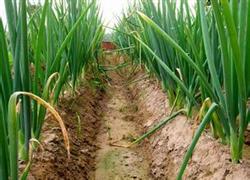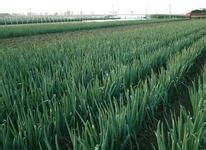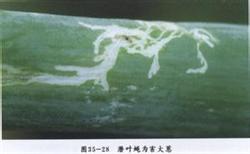Winter management of wheat field interplanted with scallions

Zhangqiu City, green onions interplanting wheat area is relatively large, this part of the wheat field is generally larger, and irrigation is timely, soil moisture is generally better than other wheat fields. For the management of this part of the wheat field, pay attention to a few points: first, according to local conditions, for the wheat field harvested green onions after autumn, it is necessary to rake and rake the buried wheat seedlings in time. In wheat fields where green onions are not harvested, it is necessary to prevent the vigorous growth of wheat seedlings, so as to avoid greater damage to wheat seedlings after harvesting green onions in the future. Second, strengthen monitoring and timely prevention and control of diseases and insect pests. At present, the wheat field in our city has entered an important period of winter infection of many kinds of diseases and insect pests. Scientific prevention and control should be carried out according to the actual situation and local conditions. Poisonous soil or bait should be allocated to control underground pests to ensure that the whole seedling overwinters. For wheat stripe rust, we should adhere to the strategy of "scouting with medicine, controlling it on the spot, finding one point and controlling one piece" to minimize the source of overwintering bacteria. The fields that reach the standard of sheath blight should be controlled, and general spray control should be carried out in the early spring of next year to reduce the disease base in the middle and later stage. Comprehensive prevention and control of wheat diseases and insect pests should be actively carried out to ensure the control effect. Third, chemical weeding. Since wheat sowing this year, the soil moisture is suitable, the temperature is high, and the unearthed rate of weeds before winter is higher than that of previous years. At present, the age of weeds is young, the drug resistance is low, the wheat seedlings are small, the degree of coverage is low, it is easy to spray weeds, and the safety interval of spraying before winter is long, the control effect is good, and it is not easy to produce favorable time for drug damage, so choose the right way pesticides to carry out chemical weeding. The application time should be carried out when the daily average temperature is not less than 5 ℃. Drugs should be used reasonably according to the occurrence of weeds. The serious occurrence of dicotyledonous weeds such as pig seedling, rice artemisia, wild rape, shepherd's purse and so on can be controlled by superstar and wheat sickle, and the serious occurrence of Monocotyledon weeds in Monocotyledon fields such as Niang Mai, wild oat and so on. Puma or oat can be used to control.
- Prev

Pollution-free Control techniques of insect pests in Welsh Onion Field
First, onion thrips, also known as small white insects, smoke thrips. Adults and nymphs suck the sap in the leaves with file-sucking mouthparts, which make the onion leaves form many fine long yellow and white spots. In severe cases, the leaves turn yellow and white, twist, wither and droop, which seriously affects the yield and quality of green onions. 1. Occurrence regularity. The onion thistle is complete.
- Next

When spring onion management is in progress in autumn
The damaged plants showed that the larvae ate the mesophyll and epidermis on the onion leaves and leaf sheaths, and formed a gray-white irregular meandering passage, and the larvae drilled in all parts of the onion leaves, endangering the veins of the leaves, and in serious cases, it would lead to the dryness and death of the aboveground parts of green onions. General leaf miner harm serious area, agricultural control needs.
Related
- Where is it suitable to grow horseradish in China? it is expected to see the middle altitude horseradish in Alishan.
- How to prevent tomato virus disease reasonably? (Control methods included)
- Many people like to plant towel gourd on the balcony. What are the main points of this method and management?
- What crops can chili peppers be mixed with?
- Fertilization techniques and matters needing attention in Tomato
- What are the grafting techniques for peach seedlings in spring?
- Harm and control methods of root swelling disease of Chinese cabbage
- What are the pests of sweet potatoes? How to prevent and cure it?
- Symptoms, causes and Control methods of navel Rot in Tomato
- The cause of "Cucumber rotten bibcock" in Farmers' planting Cucumber and its Control Plan

